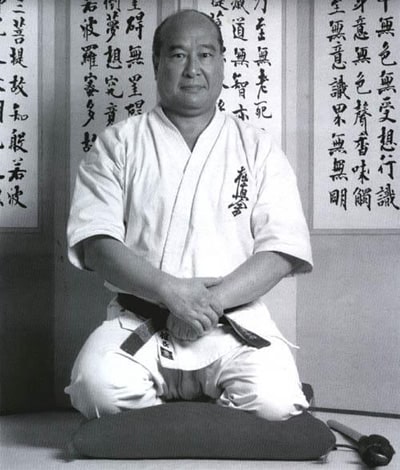Masutatsu Oyama, often referred to simply as “Mas Oyama”, was a Korean-born karate master renowned for his extraordinary strength and stamina. He is the founder of Kyokushin karate, a style known for its intense physical rigour and full contact.
Born as Choi Yeong-eui in Korea in 1923, Oyama moved to Japan at the age of 15. He began training in the martial arts at a young age, first in China under the tutelage of Yi Soo-hwan, a Korean taekwondo master, then in Japan where he studied judo, Western boxing and finally Shotokan karate under Gichin Funakoshi.
In the 1940s, Oyama began training alone in the mountains, with the aim of deepening his understanding of karate and improving his physical and mental strength. He spent several years concentrating on his training, living simply and practicing intensely.
On his return to civilization, Oyama gained a reputation for his impressive karate skills. He is best known for his breaking demonstrations and bullfights, in which he would take on bulls with his bare hands, demonstrating his strength and technical mastery.
In 1953, Oyama founded his own dojo, or karate school, in Tokyo. Initially, he taught a style of karate based on Shotokan, but over time he developed his own unique style which he called Kyokushin, or “the ultimate truth”. Kyokushin is characterized by full contact and physical rigor, with a particular focus on endurance, strength and discipline.
Kyokushin quickly gained in popularity and developed into a worldwide organization, with dojos in countries all over the world. Oyama continued to teach and promote Kyokushin until his death in 1994.
Oyama has also written several books on karate, including “What is Karate?” which has been translated into several languages and sold millions of copies. He also played a major role in the development of karate as a competitive sport, organizing the first Kyokushin karate world championship in 1975.
In short, Masutatsu Oyama was a karate master of great importance, not only for his technical mastery and physical strength, but also for his role in the development of Kyokushin karate. His dedication to training, his philosophy of perseverance and his desire to push back the limits of the human body make him an emblematic figure in karate. His legacy continues to inspire and influence karate practitioners around the world.


